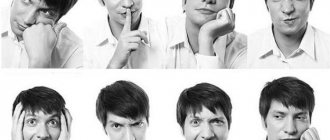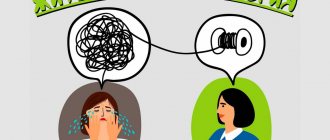Chronic stress is a pressing problem for many men and women. The results of numerous studies show that improving the quality and comfort of life does not reduce the impact of stress on the psyche. Life in big cities, hard work, family relationships and other aspects of life require constant adaptation of the psyche to new conditions. A person needs to cope with certain difficulties every day. At the same time, everyone’s resources for stress resistance are different. Coping strategies in the psychology of stress play an important role in reducing the negative impact on the psycho-emotional state.
What are coping strategies
This is a sequence or set of actions aimed at reducing stress. In domestic psychological practice, this adaptation mechanism is called experiencing or overcoming the adverse effects of stress. In a general sense, coping can be called any way to protect the psycho-emotional state while solving any life problems, be it searching for a job or communicating with other people.
Adaptive coping strategies are natural defense mechanisms of the psyche, that is, all people use this method of protection against stress throughout their lives. For example, simple methods to improve mental well-being include humor, distraction, public expression of emotions, and avoidance of certain situations. The unconscious use of such strategies shows that coping is a continuation of the reflex activity of the brain. There are also specially developed methods of adaptation to stress used in psychotherapeutic practice.
Various psychological defenses are important in everyday life, since every person faces difficulties every day. Minor stress can occur even in familiar surroundings. The inability to manage your emotional state may be a prerequisite for the consequences of chronic stress. Thus, it is believed that a violation of the mechanism of psychological adaptation is the cause of the formation of anxiety neurosis, depression and other disorders.
Basic definitions
Coping behavior is the actions performed by a person aimed at overcoming stress. This term includes cognitive, emotional, and behavioral methods. They are used to cope with the demands of everyday life. Coping behavior is also emotion management and stress management. This category includes all strategies aimed at self-regulation of behavior.
Historical reference
Physicians and psychologists have been studying psychological defense over the past two centuries. This area of knowledge is inextricably linked with the development of psychiatry and neurophysiology. The discovery of coping strategies has helped scientists understand the causes of certain diseases and develop productive methods of psychotherapy. Today, a variety of adaptation techniques are used in cognitive behavioral therapy and other methods of treating mental disorders.
Scientists' views on the phenomenon:
- In the mid-20th century, German psychoanalyst Karen Horney developed her theory of psychological defense against daily difficulties, dangerous situations and interpersonal conflicts. The scientist discovered several adaptation strategies. So, one of them is to accept compromises to resolve conflict situations. Karen also described unhealthy defense mechanisms that lead to the development of neuroses. So, for example, we are talking about a constant mental return to an unpleasant situation.
- The German scientist Otto Fenichel studied coping strategies in childhood. The psychologist came to the conclusion that the child’s consciousness gradually gets used to certain reactions and judgments provoked by undesirable phenomena. This is a kind of distraction from a negative event. As they grow older, this method is modernized. An adult needs not only to be distracted from stress, but also to gradually accept a new, less comfortable reality, where conflicts and incidents periodically occur.
- Psychology specialist Heinz Hartmann described coping strategies as one of the ways of expressing the core of personality (ego). The scientist described the gradual development of the mechanism throughout life. According to his theory, from the first years of life a person begins to overcome certain difficulties that “feed” the conditioned reflexes of psychological defense. By the time of growing up, a stable type of adaptation to negative influences is formed.
The modern development of coping strategies in the field of psychotherapy is largely connected with the works of the scientists listed above.
Types of psychological defense
Coping and psychological defense are mechanisms that allow the individual to adapt to changing external situations that act as stimuli.
These mechanisms are similar to each other, but have certain differences
:
- Coping occurs in a person’s mind; he can control behavior and change tactics; and psychological defense arises in the unconscious and it is impossible to fully control it.
- Psychological protection is aimed only at reducing psycho-emotional stress, and coping allows you to build effective relationships.
- Coping unfolds gradually over a certain period of time; and psychological defense occurs at lightning speed, while a distortion of reality is observed.
- Coping presupposes the presence of certain resources inherent in it, and psychological defense indicates a lack of resources and flexibility of consciousness.
Just like coping, psychological defense can be presented in various forms.
:
- Repression
: a person forgets a situation that caused him discomfort. However, such a mechanism is not always reliable, since memories can return again. And to effectively forget, the brain spends a huge amount of resources. - Projection
: This is a mechanism in which one's own thoughts and desires are unconsciously attributed to other people; this allows you to relieve yourself of responsibility for actions that seem “wrong.” For example, strong jealousy may be a consequence of the desire to cheat on your wife. - Introjection
: this is the indiscriminate appropriation of other people's thoughts, norms, rules to oneself, regardless of one's own desires. In childhood, introjection is a normal mechanism, since all education and training are based on it (it is known that children perceive all information about the world uncritically); but in adulthood it can lead to the inability to have one’s own opinion, feel and think independently; a person turns into some kind of biorobot. - Merger
: in this behavior, the boundary between one’s own and another personality disappears, leaving one all-encompassing “we”. This mechanism manifests itself positively in the relationship between a very young child and his mother, since it allows the child to survive in the first years of his existence. But in adults, fusion gives rise to the disappearance of the ability to feel, relationships are deprived of passion. - Rationalization
: this mechanism encourages you to look for the causes of unpleasant situations not in yourself, but in some external circumstances. For example, a person, having failed to get a job that interests him, tries to convince himself and others that he himself did not particularly want to get it, since the work is supposedly tedious and uninteresting. Rationalization often manifests itself as devaluation. - Denial
: This is a mechanism that manifests itself as an attempt to deny obvious facts. Denial is a complete rejection of unpleasant information. This behavior is reminiscent of the actions of a small child who thinks that if he closes his eyes and does not look at the bee, it will disappear and will not sting him. Naturally, such actions do not make the problem disappear, and sooner or later the presence of the problem has to be recognized (although often by that time it has already had its final impact on the person). - Regression
: in this case, a person adapts to a difficult situation by returning to forms of behavior familiar from childhood - such as crying, whims, emotional requests, etc. A person learns on an unconscious level that such behavior guarantees a way out of a difficult situation, since it really worked in childhood : after all, his parents decided almost everything for him. However, in adulthood, regression is usually an indicator of immaturity, mental weakness, and inability to find a successful strategy to solve a problem. - Sublimation
: a mechanism in which, in an attempt to forget a traumatic situation, a person switches to some other activity that is socially acceptable; most often it is creativity and sports. Sublimation is a productive defense mechanism because it has given society many great works of art and sporting achievements. - Reactive formation
: in this case, consciousness protects a person from unpleasant impulses, producing opposite impulses, and often in an exaggerated form. For example, a person believes that it is unacceptable to even lightly spank children for pranks, and those parents who do this should be immediately brought to justice (or shot).
Stressful phenomena in psychology
Stress is a set of mechanisms of adaptation of the body to negative external and internal influences. Many people associate this term with something unfavorable, but stress itself in psychology and physiology is considered a way of protection. For example, improving blood supply to skeletal muscles helps adapt to physical activity. A dangerous situation stimulates brain activity, thanks to which the individual quickly finds a way to solve the problem. At the same time, constant activation of adaptation mechanisms (chronic stress) is considered a negative phenomenon.
There are two main types of stress:
- Emotional stress phenomena are ways a person adapts to certain situations. An example is aggression that occurs in response to an attack. In this case, stress helps protect yourself and loved ones.
- Psychological stress is almost always related to interpersonal interactions and daily difficulties. Normally, this method of adaptation activates cognitive activity, improves attention and self-control. When this function is impaired, adverse consequences occur, including chronic anxiety, sleep disturbances, and decreased mood.
Leadership
Pyramid principle
medium.com
The principle consists of three key points:
- Answer the question first.
- Then formulate your arguments.
- Finally, organize your ideas into a logical chain.
The pyramid principle works great when paired with the rule of three. This will help you convince your interlocutor and successfully convey your point of view.
99/50/1
The leader must be sure to communicate with his team of performers at these critical moments:
- at the beginning of the project, when 99% of the work remains to be done;
- in the middle of the journey, when 50% of the work is already done;
- at the finish line, when only 1% of the work remains to be done.
This method will allow you to use your time efficiently and allow your team to create a worthwhile product.
Directly responsible person
The term appeared thanks to Apple. She puts the name of the Directly Responsible Individual (DRI) next to each item on the agenda. Each employee is responsible for completing his or her task. This reduces the need for frequent meetings.
Team of Teams
In a team of teams, all employees interact with each other. The decision is made collectively, since everyone is bound by a common goal.
Radical Candor
The essence of the method lies in the manager’s ability to convey healthy criticism to employees. You shouldn’t evade, you need to politely and openly tell the truth. After all, the manager is interested in the growth and success of his team members.
Coping strategies from the point of view of psychology and physiology
The main regulatory systems of the body are the brain and the endocrine apparatus. The brain is a part of the central nervous system responsible for maintaining vital functions and cognitive processes, including memory, intelligence and emotions. The higher part of the brain, called the cerebral cortex, provides thinking and the development of adaptive strategies. The endocrine apparatus is formed by endocrine glands that secrete regulatory substances (hormones). The production of these substances helps the body prepare for changes in external or internal conditions.
Endocrine processes largely determine coping behavior. The main stress hormone (cortisol) has been found to be produced in the body during stressful situations in men. In women, on the contrary, the level of this hormone decreases in a similar situation, but at the same time the activity of the limbic parts of the brain increases. Many scientists believe that it is this difference that determines different gender strategies for protecting against stress. In men, the main adaptive mechanisms fall within the framework of avoidance or attack, and in women, in care and empathy.
Cortisol (the main stress hormone) is secreted by the adrenal cortex
The male fight-or-flight strategy activates the sympathetic nervous system and promotes the production of adrenaline. Against the background of these physiological processes, physical activity improves. A similar reaction occurs in the female body, but the level of aggression is usually lower. The listed gender mechanisms describe only the simplest or fundamental methods of adaptation to stress. There are more complex cognitive functions associated with exposure to psychological stress.
More about adaptation mechanisms
Fundamental strategies for coping with stress are based on physiological changes dictated by the activity of secretory organs and parts of the nervous system. There are main types of changes in the body that determine many psychological coping strategies. Understanding these processes helps improve adaptation to stress factors.
Main types of physiological changes:
- Activation of the sympathetic nervous system and production of adrenaline during adverse events
For example, a hunter saw a bear not far from him. Adaptation of the body consists of changing vascular tone, improving muscle function and increasing blood flow to certain organs. The activity of the brain is activated, thanks to which the individual finds a way to solve the problem.
- Activation of the parasympathetic nervous system
The opposite effect occurs, preparing the body for rest. The individual relaxes, the activity of the cerebral cortex decreases. For example, such changes occur during preparation for bed. Parasympathetic regulation plays an important role in coping with chronic stress. Violation of this function leads to unfavorable changes in the areas of psychology and physiology.
Different types of nervous and endocrine regulation are prerequisites for the emergence of certain coping strategies.
Origin of the term
This term first appeared in psychology in the second half of the 20th century. Its author is considered to be Abraham Harold Maslow. This concept is also found in the works of L. Murphy. He coined the term "coping" in 1962 while studying how children cope with stress. Four years later, in 1966, R. Lazarus also used this term in his study “Psychological stress and the process of coping with it.” The translation of this word is “cope”, “overcome”, “struggle”, “measure”, “cope”. The term coping, the translation of which was presented above, comes from the English verb coping. In psychology, the concept of coping has long been associated with the process of coping with stress and overcoming unpleasant situations and circumstances.
Coping behavior and resources in psychology
Any psychological adaptation is based on a person’s experiences, thoughts and actions at a specific point in time. These can be conscious and unconscious reflexes that are activated in stressful situations. Involuntary strategies are determined by the individual’s experience in overcoming difficult situations and formed conditioned reflexes. An example is selective memory, which allows one to forget unpleasant events. Voluntary strategies are formed at a specific moment in response to any stimulus. The individual is looking for a new way to solve the problem.
There is also such a term as coping behavior, which determines the ability to adapt to unfavorable conditions. The absence of such a psychological trait can be a serious violation. Separately, psychology identifies non-adaptive coping strategies that reduce the impact of stress, but do not help a person cope with difficulty. Thus, some men and women prefer to avoid stressful situations and ignore the need to look for a way to solve the problem. Avoidant behavior is considered an unfavorable trait because it reduces quality of life.
To maintain coping behavior, an individual needs certain resources. The main resource is positive thinking, which makes it possible to focus on the positive aspects of everyday life. It is important to understand that positive thinking is not about avoiding a problem. On the contrary, this strategy helps to successfully overcome difficulties and reduces the load on the nervous system.
Additional resources include creativity, self-esteem, empathy, and positive interpersonal interactions. At the same time, the relationship with self-esteem plays a crucial role in adaptation.
Self-change
Finally, one of the most important ways of coping is reassessment of values, as well as self-change. The circumstances in which a person must overcome conflict are seen as a source of personal growth, an opportunity to gain experience and change for the better.
Self-perception may change in such a person towards the idea of himself as a confident and strong person. Thus, the crisis acts as a basis for changing the system of worldviews and values, an opportunity to join new philosophical or religious views. That is why any, even the most unsuccessful experience can have a positive aspect - if it serves as the basis for positive personal transformations.
Classification
Experts have studied more than four hundred techniques for suppressing the effects of stress. The approach to classifying this phenomenon may vary. Some psychologists prefer to separate coping strategies that focus on ways to solve a problem and adaptation mechanisms that are associated exclusively with the emotional state. Others share direct coping strategies and types of avoidant behavior. At the same time, there is a generally accepted classification that includes well-studied techniques.
Main types of coping strategies:
- Active search for ways to overcome difficulties associated with analytical thinking. This is a productive type of coping strategy that allows an individual to calmly solve the problem that has arisen and not succumb to negative emotions. Voluntary and involuntary methods of protecting the psyche are used.
- A method of confrontation that involves an aggressive and risky solution to a problem. The role of a defensive reaction is self-confidence.
- Method of accepting responsibility: the individual understands that only he can solve the problem that has arisen.
- Avoidance behavior is a maladaptive coping strategy that involves distancing oneself from any difficulty.
- Self-control is the suppression of experiences that prevent you from finding a way to solve a problem.
- Positive reappraisal. Identifying the positive aspects of the situation and thus changing the emotional perception of the difficulty.
- Receiving help from society. A coping strategy may consist of communication that helps to speak out and receive psychological support.
It is important to determine the optimal defensive reaction in a particular situation. Many types of psychotherapy are aimed at identifying ways to deal with stress and selecting more effective techniques.
Examples of defensive reactions
For each type of coping strategy, characteristic examples can be given that demonstrate the essence of the defensive reaction:
- The child was bullied by high school students. The student’s actions began to be ridiculed. Avoidance behavior has developed, in which the individual avoids companies and prefers to spend time alone.
- A lonely man heard a loud noise in the kitchen at night. A brief feeling of fear gave way to aggression: he took a heavy object and headed to the kitchen, ready to defend his life and his property. Another coping strategy in such a situation may be to try to hide.
- The applicant received the exam results and realized that she would not be able to enter the university. The girl goes to visit her friend and tells her about the situation in order to receive psychological support.
It should be borne in mind that the reaction to stress largely depends on gender and upbringing. Gender determines some behavioral stereotypes in stressful situations.
Positive reappraisal of the situation
Even such coping strategies as “positive reappraisal of the situation” are assessed ambiguously. On the one hand, giving a problem a positive meaning reduces stress and serves to emotionally tune in to the problem; on the other hand, a change in attitude distracts from solving specific practical problems. However, it appears that the positive reappraisal strategy may be effective in situations where the subject has no control over the outcome.
Problem-solving strategies tend to be more effective than strategies that focus on the person's attitude toward the problem. However, research also shows that using multiple coping strategies simultaneously is more effective than choosing only one specific way to respond to a situation. As noted earlier, the effectiveness of coping strategies depends on both the reaction itself and the context in which it occurs. Coping strategies that are ineffective in some situations may well be effective in others; for example, strategies that are ineffective in a situation that is beyond the control of the subject may be effective in situations that the subject can control and change in the desired direction.
Self-esteem in terms of our ability to cope with life events is based on previous experience in similar situations, self-confidence, social support from people, self-confidence and relaxedness (Lazarus, 1982).
Thus, based on an analysis of the works of various authors, three approaches to the concept of coping can be distinguished: defining coping in terms of personal characteristics - as a relatively constant predisposition to respond to a stressful event; consideration of coping as a form of psychological defense used to relieve stress. Proponents of this approach tend to identify overcoming with its result. The third approach belongs to Lazarus and Folkman, according to which coping should be understood as a dynamic process, a constantly changing cognitive and behavioral attempt to cope with internal and/or external demands that are assessed as stressful, or to anticipate personal resources.
This definition has several important differences from other coping concepts. First, coping is seen as “constantly changing”; secondly, a distinction is made between coping and purely adaptive behavior; coping is limited to reactions in which the person's resources are assessed as burdensome or anticipatory. Third, Lazarus distinguishes coping from its outcome because coping is an “attempt to cope” that involves more than just the outcome.
J. R. Edwards' (1988) model of stress and coping, which is of interest in the context of this study, is included in Appendix 1 to this work. It shows the influence of coping behavior on personality characteristics, among others, which depend on the individual's self-esteem.
The stress and coping model is a generalization created by J. Edwards based on the analysis of stress and coping theory, and includes elements considered in the theories of motivation, decision making and control theories. The author defines stress as a negative discrepancy between the current state and the desired state, provided that the presence of this discrepancy is significant for the person. The process begins with assessing and recognizing the critical moment. Awareness is influenced not only by the characteristics of a person, his physical and social environment, but also by the available information, as well as his own cognitive structures of reality.
How to improve the situation if necessary
To improve ways to deal with stress, it is recommended to consult a psychologist or psychotherapist. It is especially important to get professional help for anxiety, low mood and impaired social adaptation. A psychologist will be able to choose the optimal method of psychotherapy. During the initial consultation, patients are usually given a test to study coping strategies. It is necessary to determine which methods the patient uses consciously and unconsciously in everyday life. There are several simple questionnaires.
Tests used:
- Heim's method for determining individual coping strategies.
- Indicator of coping strategies.
- Lazarus Questionnaire.
- Questionnaire of Wasserman and Gumenyuk.
After determining the individual profile of defensive reactions, the specialist selects the method of psychotherapy. A psychologist can help improve existing coping strategies or select new techniques. If the patient is prone to avoidant behavior, training in adaptive strategies is necessary.
Resource approach
As stated above, each person has a set of certain resources that help control the situation, feelings, and emotions. With their help, you can maintain mental and physical health even in the most difficult, one might say, critical situations.
These resources are internal and external. The first include innate abilities, as well as skills and abilities that were acquired as they grew older. External - tools for dealing with stress from the environment, moral and emotional support from loved ones.
Each psychologist has his own opinion about resources. S, Selingman believed that the most important thing to combat stress is optimism. Ah, Bandura was banking on self-efficacy. For others, resilience is considered the most important indicator. Be that as it may, all these qualities influence the formation of coping strategies as much as changing circumstances.
If material and social resources were lacking in childhood, the repertoire of strategies in the future will be small. A person can even consciously narrow their spectrum. A good example: reluctance to interact with other people. Because of this, not only the circle of contacts decreases, but also the resources of the environment become smaller.
Selection of adaptation strategies
Some studies have shown that different personality traits are associated with certain coping strategies. Thus, insecure and anxious people prefer avoiding and distancing techniques of psychological defense. Choleric people choose aggressive and risky methods of overcoming difficulties. Accordingly, the specialist needs to focus on the patient’s capabilities. Also, sometimes it is necessary to replace an unstable protection technique with another method. For example, if a person reacts aggressively to any stimuli.
The most universal and simple adaptation methods are positive reappraisal, planning and self-control. These techniques can be taught to most patients. It is often recommended to combine these coping techniques with counterproductive techniques such as distraction and distancing. In this case, a person will be able to simultaneously distract himself from unpleasant experiences and find a way to solve the problem in a comfortable environment. It is important not to impose complex types of coping on patients with unstable mental health.
Diagnostic technique for determining strategies
The objectives of the methodology are:
- help people recognize a problem when it occurs;
- suppress the tendency to react impulsively to a problematic situation;
- provide a wide range of possible answers appropriate to the situation, and establish a procedure for selecting the most appropriate answer to the problem presented.
The result will be greater effectiveness in overcoming problems, as well as a reduction in possible emotional reactions (such as anxiety) associated with them.
Such training is especially useful in situations where a person is beating around a problem, not knowing what to do, unable to make decisions, or making impulsive or inappropriate decisions because he has not taken into account some aspects of the situation or the possibilities of real action.
The technique consists of the following steps:
- Problem orientation
It should be recognized that problematic situations (for which there are no immediate solutions) are common and normal occurrences in life, and it is logical to expect them to arise relatively frequently.
We must address them by seeking effective responses, rather than wallowing in feelings of futility or allowing emotional reactions to block more rational actions. The most suitable for this is:
- Try to identify problematic situations when they arise.
- Resist the temptation to react impulsively to a problematic situation.
- Look for possible solutions that fit the situation.
- Don't consider the problem insurmountable.
- Definition and formulation of the problem
Only well-formulated problems can be solved. In scientific research, the terms of the problem (or issue being addressed) are usually clear and well defined.
A clear question makes it easier to answer. But in everyday life, problems are often not so clearly defined. You must learn to define problems in objective and solvable terms.
A more adequate formulation can be helped by considering a number of basic questions: who is involved, what is happening, where, when, why, etc., including only data and facts in the answers, and correcting any possible assumptions and interferences.
Faced with a definition such as "my problem is that I can't do my current job", a definition that does not allow for any solution, alternative definitions such as what can I do to improve my working conditions, especially with more time ? or what should I do to change jobs?”, they provide a starting point for a possible solution.
- Generating alternative solutions
The goal now is to generate or find as many behaviors or actions as possible to solve the problem situation.
Brainstorming may be a suitable technique for this. While “everything is going on”, so the mental block of possible solutions is not established.
It is necessary to generate a large number of alternatives (at least ten), since the more solutions, the more choices there are and the higher the likelihood that the best possible solution will be found among them. The requirement of at least ten forces us to change the usual point of view.
- Decision-making
Now it is time to evaluate the generated solutions and decide which or which ones to choose to solve the problem. To do this, evaluation criteria must be established, each of which is assigned a certain score depending on the importance attached to it, for example, personal well-being, professional image, financial compensation.
Once the criteria are established, each alternative is evaluated by calculating the value it must have to achieve each of those criteria. The alternative solution that receives a higher score will be selected as the answer to be returned.
- Implementation and verification of the selected solution
At the end of the period of time during which the chosen solution will be put into practice, it is assessed to what extent it was effective, that is, whether it achieved a solution to the problem.
To do this, the decision matrix is again used with previously established criteria, but now with an assessment of realities, rather than expectations.
If the specified criteria are met, then the problem will be solved or is in the process of being solved; if, on the contrary, not, then the process of solving the problem will have to be reconsidered.
Natalia Shakhova









